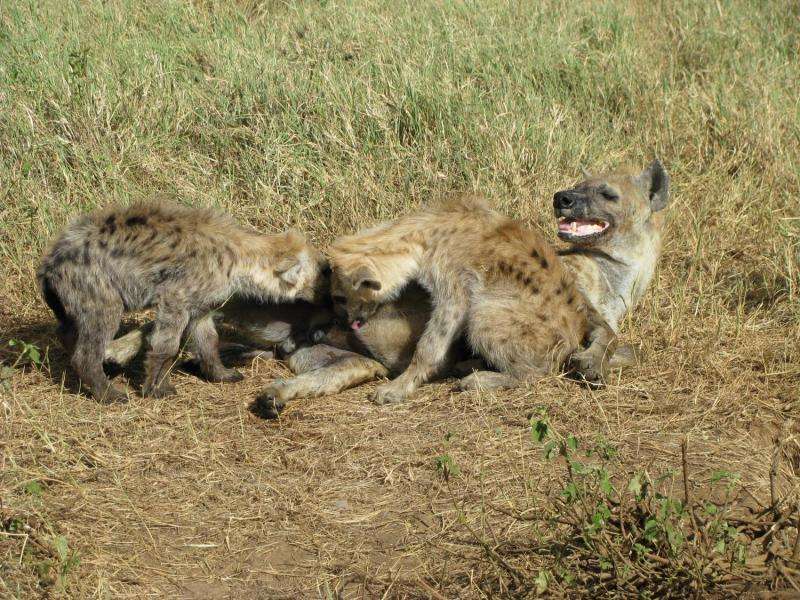Maternal social status and sibling rivalry shape milk transfer in spotted hyenas

Females of low social status often have limited access to food resources. As a result, their offspring are nursed infrequently and may experience long fasting periods that can seriously compromise their growth and survival. In particular when they have to share their milk intake with a littermate, milk shortage can be very detrimental. Yet researchers from the German Leibniz Institute for Zoo and Wildlife Research (IZW) and the German Max-Planck-Institute for Behavioral Physiology found that low-ranking spotted hyenas were able to compensate to some extent for their low nursing frequency. They do this by transferring more milk of superior nutritional quality to their offspring than high-ranking mothers during nursing bouts. The results also reveal that the socially dominant offspring in twin litters efficiently uses aggression against its subordinate littermate to skew milk transfer in its favour. The study has been published in the scientific journal Behavioural Ecology.
The Scientists have examined the social and ecological constraints on lactation in wild spotted hyenas, a social carnivore with an exceptionally high investment in lactation. The findings of the study reveal trade-offs in lactation components in a social mammal living in a highly variable environment. The results also indicate that offspring play an active role on milk intake during nursing bouts.
Producing milk is energetically very costly, particularly in long-lived species with slow offspring growth rates and late weaning, and in those species where females shoulder the entire burden of raising the offspring. Female hyenas give birth to one or two, very rarely three, offspring and nurse them for up to 20 months before they are weaned – a nursing pattern more akin to humans than to most other carnivores. In the Serengeti National Park, Tanzania, where the study took place, the migratory system of herbivores leads to the absence of some or all prey species for large sections of the year from a particular group's ("clan") territory. This forces clan members to frequently forage outside their territories.
Each clan is structured by a stable dominance hierarchy. The scientists investigated how the social status of females in this hierarchy and fluctuations in the abundance of prey species in clan territories affected lactation strategies by spotted hyena females. They further examinedhow sibling competition in twin litters affected milk transfer during nursing bouts. The results reveal that long-distance foraging increased the number of days mothers were away from their cubs and thus decreased how often cubs were nursed.
The study asked if and to what extent mothers could counterbalance such a decrease in nursing frequency by changing other parameters of milk delivery. "Mothers partially compensated for this effect by increasing the quantity and quality of milk, primarily the fat content, which they transferred to their offspring per nursing bout", says Heribert Hofer, lead author of the study. To analyse milk quality the researchers established a successful way in collecting milk from hyenas, which is especially outstanding since extracting milk from wild animals is usually very difficult. The scientists also found that the amount of milk transferred to singletons was higher than to each member of a twin litter.
Offspring behaviour influenced milk transfer. "Sibling competition has a substantial effect on milk transfer", explains Marion East, head of the long-term research project: "When a mother's nursing frequency declined owing to long-distance foraging, competition for milk increased between cubs in twin litters when mothers returned to nurse them." The scientists measured milk ingested by each littermate by non-invasively weighing the cubs on a hidden electronic scale. They found that the dominant sibling ingested more milk than its subordinate littermate during each nursing bout and this bias increased as the dominant's aggression intensified.
The results of this study show how the interplay between ecological and social constraints determines the quality and quantity of milk transferred, and how dominant siblings use aggression to skew milk intake in their favour.
More information: Heribert Hofer et al. Trade-offs in lactation and milk intake by competing siblings in a fluctuating environment, Behavioral Ecology (2016). DOI: 10.1093/beheco/arw078
Journal information: Behavioural Ecology , Behavioral Ecology
Provided by Forschungsverbund Berlin e.V. (FVB)



















